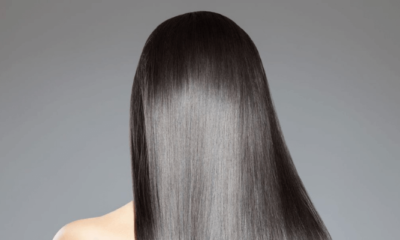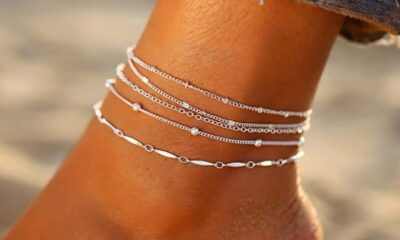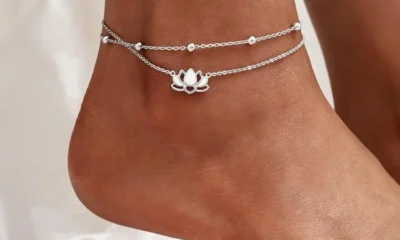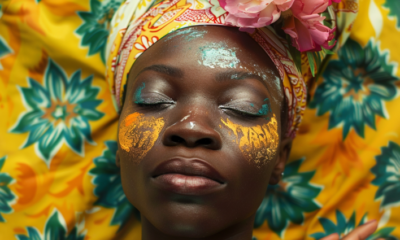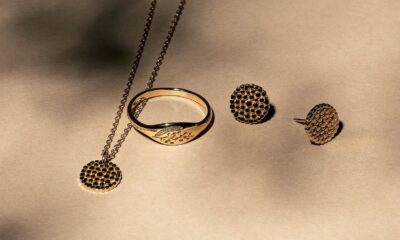BEAUTY
Fungal Acne: Causes, Symptoms, And Treatment Options
Published
1 year agoon
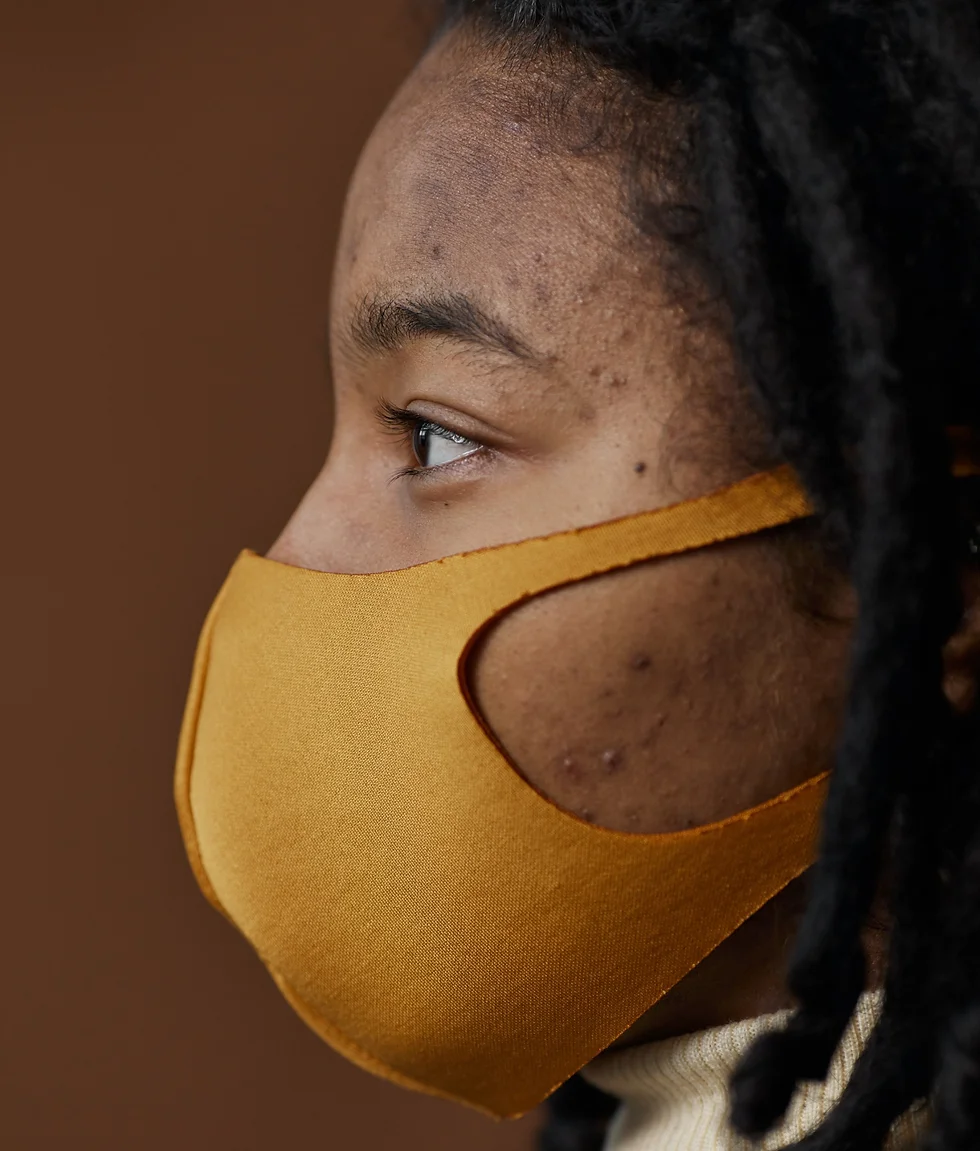
Have you ever broken out in a rash of stubborn pimples that just won’t budge with your usual acne treatment? They might also be itchy, unlike the usual suspects. This puzzling culprit could be fungal acne, also known in scientific circles as Malassezia folliculitis. Don’t worry, this isn’t some exotic disease; it’s a common skin disease caused by a little yeast overstaying its welcome.
Unlike the traditional acne we’re all familiar with, fungal acne arises from an imbalance of a type of yeast called Malassezia that naturally lives on our skin. When this yeast population explodes in number, it can trigger inflammation in the hair follicles, leading to the appearance of pesky bumps that closely resemble regular acne.
Fungal acne flourishes under specific conditions. Imagine a warm, steamy environment—perfect for a relaxing spa day. This type of acne is more common in regions with persistently warm and humid climates. This means people living in tropical or summery climates might be more prone to experiencing it.
Several factors can trigger an unwelcome outbreak of fungal acne. When moisture lingers on the skin for extended periods, it creates a cozy haven for Malassezia yeast to thrive. Certain skincare products can unknowingly contribute to the problem. Those fancy formulas packed with oils and fatty acids, while intended to pamper your skin, might be providing an unexpected feast for the yeast, worsening the situation.
Our body’s natural defenses also play a role. Individuals with compromised immune systems may find themselves more susceptible to fungal acne outbreaks. Similarly, hormonal fluctuations, like those experienced during puberty or pregnancy, can upset the delicate balance on our skin, making us more prone to this type of acne.
Fungal Acne or Regular Acne?
While breakouts are a common foe, sometimes the culprit behind those pesky bumps isn’t quite what you expect. Both types of acne can cause frustration, but the root causes and treatments differ significantly. Regular acne is caused by the teamwork of oil, bacteria, and dead skin cells clogging your pores. Fungal acne, however, is the result of an overgrowth of a specific fungus.
So, how can you tell the difference between these two?
Fungal acne typically shows up as a cluster of small, red bumps that itch like crazy. These bumps often resemble a rash and may have a red border around them. Unlike regular acne, which can manifest in various forms like blackheads, whiteheads, or even cysts, fungal acne usually sticks to these small, itchy bumps. Also, while regular acne can appear anywhere on your face, fungal acne is more likely to appear on your upper back, chest, and shoulders. On your face, you might find it concentrated on your forehead, cheeks, and chin.
The good news? Treatments exist for both fungal and regular acne. It’s crucial to differentiate between the two types of acne to ensure you receive the most effective treatment.
Triggers For Fungal Acne
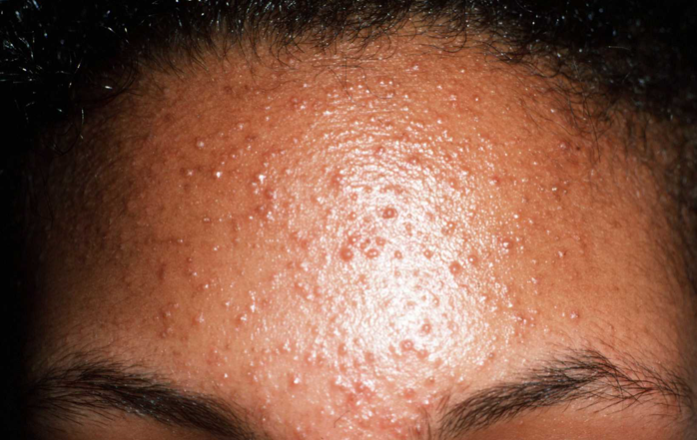
- Warm, muggy environments create a breeding ground for Malassezia yeast. So, if you live in a place with high humidity, be extra vigilant about managing this condition.
- While sweating is a natural bodily function, it can worsen fungal acne. Sweat provides moisture for yeast to flourish, and if it lingers on the skin, it can also clog pores.
- Clothing choices can also play a role. Tight-fitting garments, particularly those made of synthetic materials, trap heat and moisture, creating a prime environment for fungal growth.
- Not all skincare products are created equal. Certain ingredients, such as oils, can feed the very yeast that contributes to it. Coconut oil, some fatty acids, and heavy moisturizers might be best avoided if you’re prone to this type of breakout.
- Over-cleansing or using harsh products can disrupt the delicate balance of your skin’s natural microbiome and contribute to fungal overgrowth.
- In some cases, certain medical conditions, such as diabetes or a compromised immune system, can make you more susceptible to fungal infections.
Diagnosis and Treatment Strategies
Fungal acne can be a real drag, and it’s important to get the right treatment because it needs something different than your typical zits. If you suspect you might have it, seeing a doctor or dermatologist is crucial.
Pro-diagnosis: A doctor can formally diagnose the problem and make sure it’s fungal acne. They might even do a special test, like a skin scraping, to check for the Malassezia yeast that causes it under a microscope.
Over-the-Counter Options: For milder cases, there are antifungal creams and shampoos you can find at the drugstore, like ketoconazole or Nizoral. These can help keep the yeast on your skin under control. But remember, if these don’t work after a while, it’s time to see a doctor again.
Prescription Power: If your fungal acne just won’t budge, your doctor might prescribe a heavier-duty antifungal medication. This could be something like a 2% ketoconazole cream applied twice daily for a specific period (like 2 to 3 weeks) to help significantly reduce the yeast overgrowth. Remember, these medications are prescribed for a reason, so it’s important to follow your doctor’s instructions carefully for optimal results.
While conventional medicine offers a variety of solutions for fungal acne, you can explore complementary techniques to manage this skin condition. Some of these natural approaches include the application of bentonite clay masks, which are known for their absorbing properties. Also, chemical exfoliants containing lactic or salicylic acid can be used to gently remove dead skin cells that can clog pores and contribute to fungal growth.
Interestingly, dandruff body washes formulated with antifungal ingredients may also prove beneficial in combating this acne. Some individuals have found success with topical natural antifungals, such as oregano oil, clove extract, or walnut hull extract. However, it’s important to consult with a board-certified dermatologist before embarking on any self-treatment regimen, as these natural remedies may not be suitable for all skin types.
Prevention and Management
:max_bytes(150000):strip_icc()/nizoralforacne-bd65d2a941c14fa18c72c844f970faac.png)
Diet: It is wise to minimize foods that create an environment friendly to yeast growth, such as refined sugars and white flour.
Skincare Routine: Develop a targeted skincare regimen that’s gentle on your skin. This might include cleansers with antifungal properties, exfoliators containing salicylic acid to remove dead skin cells, and soothing toners that also boast antifungal benefits. Since oil can be a breeding ground for fungus, opt for lightweight, oil-free moisturizers.
Hygiene: Simple hygiene practices can go a long way. Avoid makeup that clogs pores, and remember to regularly wash pillowcases, towels, and any shared beauty tools like brushes and razors. This helps prevent the spread of both bacteria and fungus.
Medical Solutions: When it comes to tackling fungal acne, topical medications like ketoconazole or ciclopirox can be highly effective. They work by directly eliminating the yeast and reducing inflammation. In more stubborn cases, a dermatologist might prescribe oral antifungal medication to address the infection from the inside out.
Probiotics: Taking oral probiotics can improve the overall health of your digestive system, which in turn can have a positive impact on the appearance of your skin.
Identifying Your Triggers: To truly conquer fungal acne, it’s important to understand what fuels its growth. Steamy environments can create a breeding ground for fungi. Try to minimize your time in them, or take steps to cool down afterwards. If you have oily skin, regular cleansing and avoiding heavy makeup can help prevent fungal acne. Excessive sweating and trapped moisture are invitations for fungus.
While these medications have their place, overuse can disrupt the natural balance of microorganisms on your skin, potentially leading to fungal acne. A dermatologist can provide personalized advice and treatment strategies to effectively manage your fungal acne. Don’t expect overnight results. Treating fungal acne takes time and consistency.
By following these steps and working with your dermatologist, you can say goodbye to those frustrating bumps and hello to clear, healthy skin!
For more beauty and skincare tips, check here.
You may like
BEAUTY
Trying These Would Make Your Synthetic Or Human Hair Wigs Luscious & Beautiful
Published
4 months agoon
December 21, 2024By
wpadminee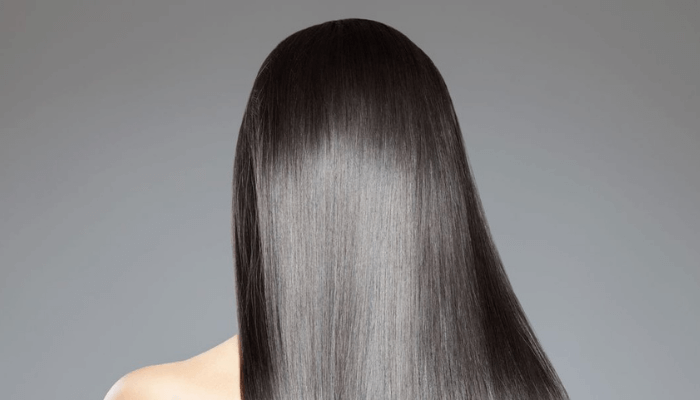
Wigs, whether synthetic or made from human hair, are versatile tools for styling, enhancing your look, or providing a confidence boost.
However, keeping them luscious and beautiful requires proper care and maintenance. Here are effective methods to maintain your wigs and ensure they stay gorgeous.
1. Understand the Material of Your Wig
Synthetic wigs and human hair wigs have different care needs. Synthetic wigs are more affordable and pre-styled, while human hair wigs offer a natural look and greater styling flexibility.
Knowing the material of your wig will guide you in choosing the right products and care methods to keep it luscious and beautiful.
2. Wash Your Wigs Properly
Proper washing is essential to maintain the beauty of both synthetic and human hair wigs:
- Synthetic Wigs: Wash them every 8–10 wears using cool water and specialised wig shampoo. Avoid rubbing or twisting the fibres to prevent tangling and damage.
- Human Hair Wigs: Wash them less frequently, about every 10–15 wears, with sulphate-free shampoos and conditioners. Always rinse with lukewarm water and pat dry gently.
Both types benefit from air drying on a wig stand, as this helps preserve their shape and style.
3. Detangle Before and After Use
Use a wide-tooth comb or wig-specific brush to gently detangle the strands. Start at the tips and work upward to the roots. For synthetic wigs, this prevents breakage, while for human hair wigs, it helps maintain natural smoothness.
4. Conditioning is Key
- Synthetic Wigs: Use wig conditioners designed for synthetic fibres. Focus on the ends, as they are more prone to dryness.
- Human Hair Wigs: Apply leave-in conditioners or serums to keep the strands soft and shiny.
Conditioning ensures your wigs remain luscious and beautiful over time.
5. Store Wigs Properly
Proper storage prevents tangling and helps maintain the style. Use a wig stand or a mannequin head. If you need to travel, pack your wig in a silk or satin bag to reduce friction and keep it looking fresh.
6. Use Heat Carefully
Synthetic wigs are generally heat-sensitive, so avoid styling them with heated tools unless they are heat-resistant. For human hair wigs, use heat tools sparingly and always apply a heat protectant to prevent damage.
7. Avoid Excess Shine on Synthetic Wigs
Some synthetic wigs may appear overly shiny. To reduce the artificial gloss, lightly dust them with baby powder or dry shampoo. This technique gives synthetic wigs a more natural and luscious appearance.
8. Refresh and Restyle Regularly
- Synthetic Wigs: Use styling sprays made specifically for synthetic fibres to refresh the look.
- Human Hair Wigs: You can curl, straighten, or colour them like natural hair, but ensure you use professional-grade products.
Frequent restyling keeps your wigs attractive and aligns them with current trends.
9. Rotate Between Wigs
Having multiple wigs allows each to rest and regain its form, extending its lifespan. Alternating between wigs also gives you variety and reduces wear and tear on a single piece.
10. Seek Professional Care
For extensive maintenance or restyling, consider taking your wig to a professional. Experts can deep-clean, restore, and even repair damages to both synthetic and human hair wigs, ensuring they stay luscious and beautiful for years.
By following these tips, you can ensure your synthetic and human hair wigs remain in excellent condition, radiating beauty and confidence every time you wear them.
Proper care not only extends their lifespan but also enhances your overall appearance, making every day a fabulous hair day.
For more articles on beauty, you can explore resources here.
BEAUTY
Nigerian Model, Samuel Nwajagu Becomes First African To Win Mister International Title
Published
4 months agoon
December 16, 2024By
Reporter
Nigerian model Samuel Nwajagu made history by becoming the first African to win the prestigious Mister International title.
This landmark achievement occurred during the 16th edition of the pageant, held in Bangkok, Thailand.
The event saw 47 contestants from around the globe, including debutant countries like Cameroon, England, Benin Republic, and Mali, competing for the coveted title.
Mister International, regarded as one of the largest male beauty pageants globally, is second only to Mister World in terms of national-level participation.
Since its establishment in 2006 by the late Alan Sim in Singapore, the competition has grown to attract participants from over 80 countries, with an annual average of 38 contestants.
This year’s competition incorporated several activities, from city tours to preliminary rounds showcasing physical fitness, cultural attire, and formal wear.
Contestants also faced topical questions, allowing them to display their intelligence, confidence, and charisma.

Nwajagu’s remarkable poise and versatility set him apart, ultimately earning him the title. He triumphed over Nguyễn Mạnh Lân from Vietnam and Glenn Victor Sutanto from Indonesia, who were among the top finalists.
Kim Thitisan Goodburn, the 2023 Mister International winner, passed on the crown to Nwajagu, symbolising the continuity of excellence in the competition.
Notably, the 2024 pageant marked a historic shift by permitting fathers, married men, and divorced individuals to compete for the first time in its 16-year history.
Hailing from Anambra State, 23-year-old Samuel Nwajagu is celebrated for his dedication to fashion, fitness, and wellness.
His victory not only highlights his talent but also underscores Africa’s growing representation on the global stage of pageantry. Through determination and charisma, Nwajagu’s success is an inspiration for aspiring models across the continent.
Check out more updates here.
ARTS & CULTURE
Does Anklet Really Signify Promiscuity?
Published
5 months agoon
December 7, 2024By
wpadminee
What is an anklet?
An anklet is a versatile piece of jewellery that women typically wear around their ankles. Crafted from materials like chains, beads, or a mix of both, anklet meanings vary across cultures and styles.
Many fashionable women choose anklets to make a bold style statement, embracing their elegance and charm.
In Nigeria, people often call this accessory a “leg chain” or “ankle chain,” reflecting its cultural relevance. In pop culture, it’s popularly known as an “ankle bracelet.”
Anklets here focus more on fashion than symbolism, though interpretations can differ. With various styles and intricate designs available, anklets offer countless aesthetic options, allowing women to showcase their personal flair.
Ultimately, anklet meanings can be deeply personal, influenced by tradition, culture, or simply individual taste.
Cultural and Historical Significance
Throughout history, anklets have held different meanings across various cultures. While some view them as mere adornments, others have associated them with deeper, sometimes controversial, connotations.
In some societies, ancient and modern, anklets symbolise promiscuity.
Early Usage in Ancient Civilisations
Egypt is often credited as the birthplace of anklets, but India played a significant role in their widespread acceptance. In India, anklets were part of traditional attire, known as pattilu, payal, or nupu.
These terms also include Paujinupur and padapadma. Early Indian literature, such as the first-century epic Silappatikaram, mentions anklets, highlighting their cultural importance.
Rajasthani women were known for their elaborate anklet designs, reflecting regional traditions.
Among the Odisha people, gold anklets were once reserved for warriors, while brides included them as part of their wedding regalia.
Married women often wore anklets to signify their marital status, and dancers used those with dangling bells to enhance their performances.
Similarly, in ancient Egypt, anklets indicated social status. Wealthy women wore gold anklets, while silver or leather versions were common among slaves and the poor.
These accessories, known as menefret or kholkai, reflected one’s place in the social hierarchy. Interestingly, some accounts suggest that anklets were linked to temple worshippers and even prostitutes, though these claims remain largely unverified.
Modern Evolution and Symbolism
Over time, the meaning of anklets has evolved significantly. In the 1970s, during America’s “sexual revolution,” anklets became symbols of female empowerment and liberation.
This era emphasised women’s freedom to express themselves, including their sexuality. Consequently, anklets began to carry connotations of promiscuity, especially within the “hotwife” culture.
The “Hotwife” Phenomenon
A “hotwife” refers to a married woman who engages in consensual extramarital relationships with her husband’s approval. Various anklet symbols reflect this dynamic:
- Two male symbols and one female symbol: Indicate openness to relationships with men of any race.
- Queen of spades: Represents a preference for Black men.
- Heart symbol: Suggests a happy marriage that includes mutually beneficial intimate relationships outside the primary partnership.
- The key to happiness: Denotes a marriage where the husband’s extramarital activities are contingent on his wife’s consent.
Anklets in Contemporary Nigerian Fashion
Today, many Nigerian women wear anklets purely for their aesthetic appeal, often unaware of the historical or cultural associations. For them, anklets are fashion accessories, not symbols of promiscuity or class distinction.
Despite lingering societal judgments, especially within conservative African contexts, it’s essential to recognize that fashion choices are personal.
Women should not face harsh criticism for wearing anklets, as these judgments stem from outdated or culturally irrelevant perspectives.
In conclusion…
Anklets are versatile fashion pieces that have transcended their historical roots. While some cultural connotations persist, modern women wear anklets to express their style and individuality.
It is crucial to separate fashion from judgement and allow women the freedom to make their own choices about their bodies and accessories.
Let’s appreciate anklets for what they are today: beautiful, empowering symbols of self-expression.
Read more articles here.
Latest


Samsung Galaxy S25 Series Sets The Standard Of AI Phones As A True AI Companion
Samsung Galaxy S25 series sets the standard of AI phones as a true AI companion …Pioneering the multimodal era with...


5 Things To Expect In Afrobeats In 2025
Afrobeats is poised to reach unprecedented heights in 2025 as Nigerian music continues its remarkable global ascent. The genre’s explosive...


Here Are The 7 Most Ancient Countries On Earth
The oldest countries in the world stand as remarkable testaments to human civilisation, each containing landscapes and monuments that narrate...


Why Self-Reflection Is More Important Than Resolutions
Millions of people embark on a yearly ritual: they sit down with a notebook and pen, eager to craft a...


Nollywood Director, Kemi Adetiba Teases King Of Boys 3
Nollywood director Kemi Adetiba has revealed that another instalment of King of Boys will be released on December 25, 2025....


John McEnroe Says He Can Be The Commissioner Tennis Needs Amid Doping Crisis
Recent doping controversies involving top players have not damaged tennis’s reputation, but John McEnroe believes that appointing a single commissioner...


“Everybody Loves Jenifa” Becomes Nollywood’s Highest-Grossing Film Of All Time
Nollywood filmmaker Funke Akindele has achieved a historic milestone with her latest film, “Everybody Loves Jenifa.” The film has officially...


FG To Premiere TV Series, “Hidden Riches” On Mining Sector On January 25
Nigeria’s Federal Government will launch an ambitious television drama series focused on the nation’s mining sector, premiering “Hidden Riches” on...


Qing Madi Delivers A Soulful Performance Of “Favourite Pyscho”
Rising Afro-RnB sensation Qing Madi launches into 2025 with a mesmerising performance on the prestigious COLOURS platform, showcasing her latest...


Taiwo Awoniyi’s First Goal Of The Season Seals Nottingham Forest’s Win Over Wolves
Taiwo Awoniyi made a triumphant return to Premier League action. He scored in stoppage time to help Nottingham Forest crush...
-Ad-





